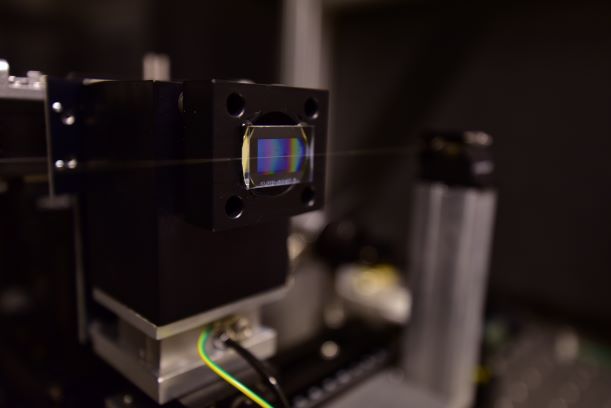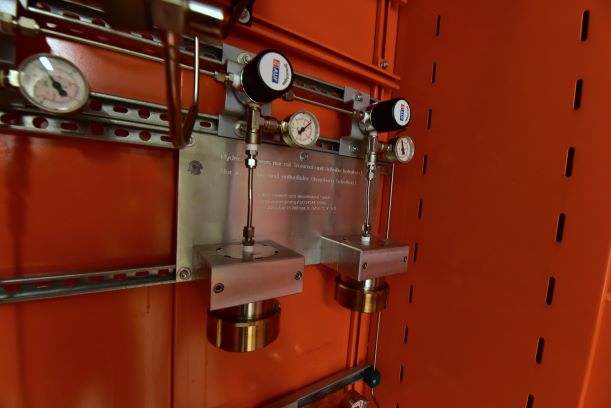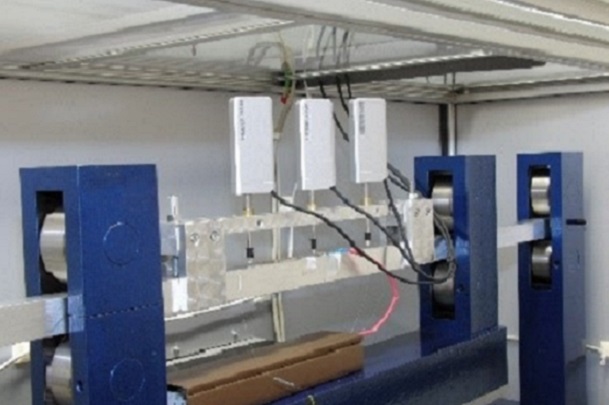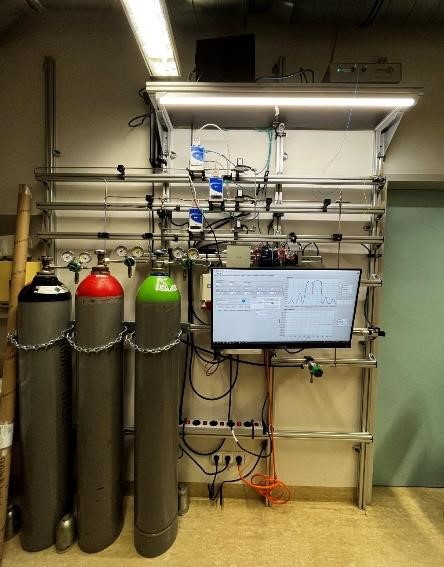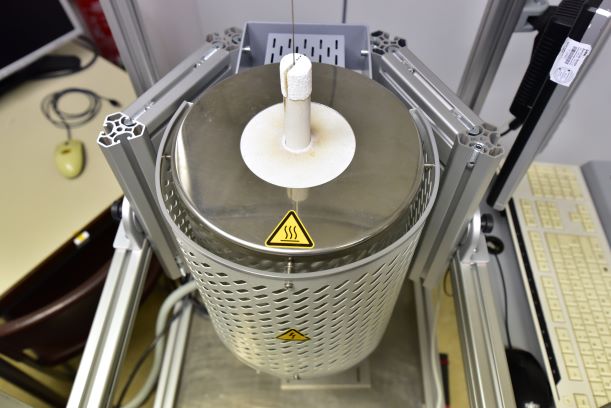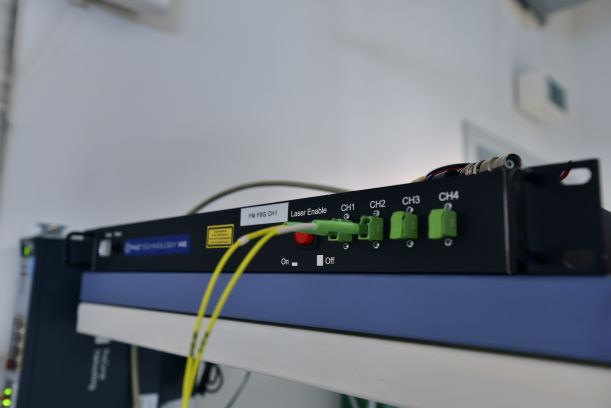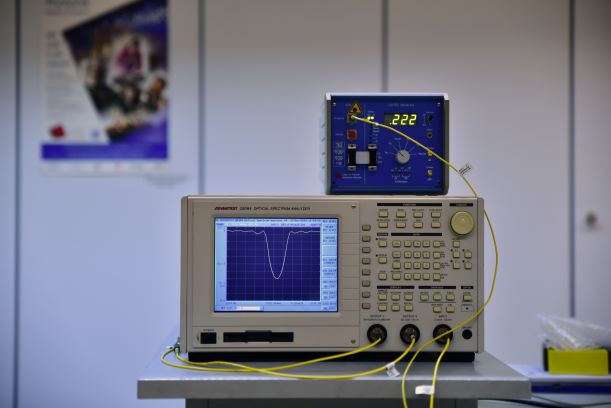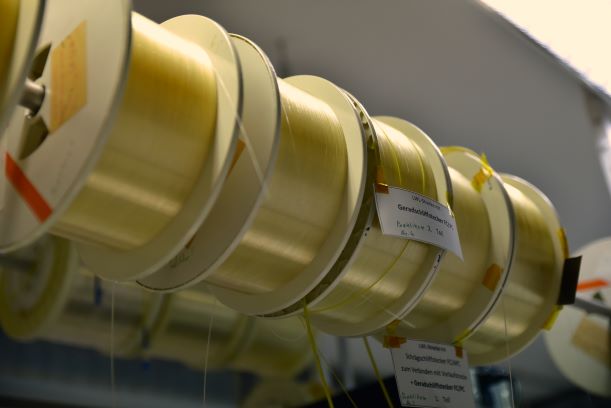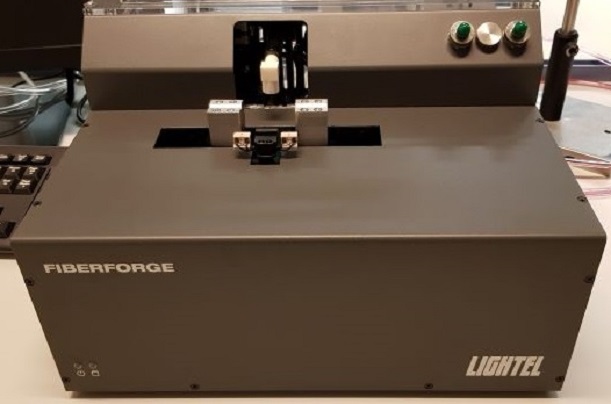-
Photonics LAB
The Photonics Laboratory
The Photonics Laboratory introduces itself
-
education
For Students
Here students will find all relevant information
-
Research
Research
Current research projects of the Photonics Laboratory
-
cooperation
Industry
For coopertion partners
-
Contact
Contact
How to reach us
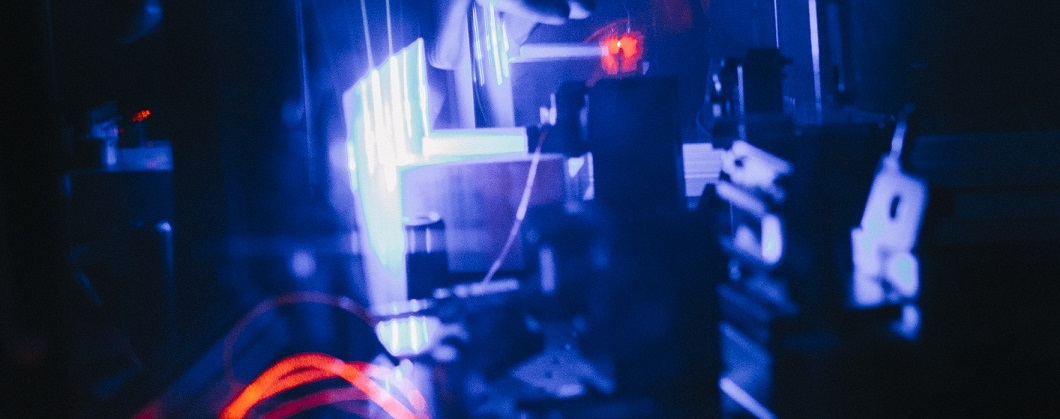

Munich University of Applied Sciences Department Of Applied Sciences And Mechatronics
Equipment of the Photonics Laboratory
The Photonics Laboratory has established a wide range of high level equipment for various fiber sensing applications, including fiber processing, fiber Bragg grating (FBG) manufacturing and calibration devices.
FBG Manufacturing
|
Laser source: |
|
Ultrafast laser workstation for material processing of transparent media Ultrafast laser source and high precision positioning system
|
|
|
Laser source: |
|
FBG Inscription Facilities Excimer-laser at 248 nm and phase mask technique
|
|
|
High pressure hydrogen chamber: |
|
Hydrogen Loading Facility High pressure hydrogen chamber
|
|
FBG Calibration
|
Four point bending setup: |
|
Strain Calibration Facility Four point bending: -1000 µstrain to 1000 µstrain
|
|
|
Hydrogen calibration facility: |
|
Hydrogen Calibration Custom-built hydrogen calibration below 2 vol. %
|
|
|
High temperature furnace: |
|
Temperature Calibration Several furnaces with a total temperature range between -40°C and 1200°C
|
|
FBG Evaluation
|
Interrogator, |
|
FBG Interrogation Scanning laser systems (FBG wavelength multiplexing)
|
|
|
Optical spectrum analyzer: |
|
Spectral Analysis Optical spectrum analyzer
|
|
Fiber Processing and Testing
|
Filament Splicing Unit: |
|
Fiber Splicing, Cleaving and Recoating Arc-charge and filament splicing units
|
|
|
Fibers |
|
Fiber Testing Optical and mechanical fiber characteristics
|
|
|
Coupler Workstation |
|
Fiber Coupler Development and Fabrication Forging tool for fiber optics
|
|


